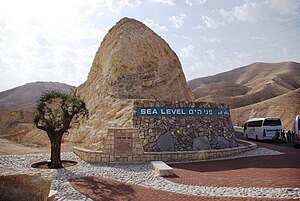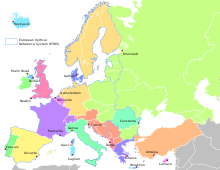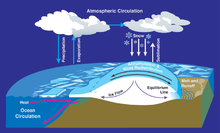博文
既不科学、又不平坦的“海平面”——“海水位”不妨后来居上
|||
全球变暖成为公众话语后,海平面上升也一并成为热词。然而,“海平面”的真实面目却并像字面那样直白。
打开手头的几本英文辞典,SEA LEVEL的释义中并无“面”的踪影,而仅仅指海水达到的高度。
“海平面”也与一般公众中小学接触的几何意义上的“平面”不太挨得上,严格来说,只是“海曲面”。
有网页比较了地平线与海平面后称:地平线指地面与天空的分隔线,其更准确的说法是将人们所能看到的方向分开为两个分类的线。海平面是海的平均高度。指在某一时刻假设没有潮汐、波浪、海涌或其他扰动因素引起的海面波动,海洋所能保持的水平面。
然而,“海平面”并不平,甚至弯得很明显似乎已被不少人认可。比如,一位网名叫“退休的物理教师”在新浪博文《潮汐使海平面呈纺锤形的原因用万有引力解释不了而用重力新定义可以》(http://blog.sina.com.cn/s/blog_9ca1df5b0101ah6f.html)中称:“只用万有引力作用解释不了,为什么涨潮现象同时发生在地球离月球最近的海面和离月球最远的海面这两个区域,从而使球形的海平面变成纺锤体形。”
我认为,用“海平面”指代基本是球面(准确一点地说,是椭球面)的海洋表面明显混淆了“平面”的几何含义,与公众接受过的数学教育相悖、十分不妥。
在大地测量学中,海水面的基准面是大地水准面(都不是平面)。
在水文科学中,WATER LEVEL就是指水位,类推,SEA LEVEL就是海水位。
就英文字面而言,SEA LEVEL主要指HEIGHT(垂直高度,“直线”也),而不是SURFACE(“面”也),SURFACE至多是延伸之义。依我的判断,将SEA LEVEL译作“海平面”可能就是一个错译。
因此,目前各种学术论文与媒体报道中的海平面上升实际上只是海水位上升而已,与“平面”并无太多干系,至多是在很小范围内的近似平面而已,并不存在广阔的海平面。从高度丈量角度看,局部的“海平线”逼近足矣。
在国内比较严谨的学术著作中,很难发现所谓“海平面”的定义。此处摘录《海洋科学导论》中的一段海面表述文字如下:“地球的形状一般是指全球静止海面的形状,即一个等位势面的形状。全球静止海面是既不考虑地表海陆差异、也不考虑陆、海地势起伏时的海面。它在海洋中是不考虑波浪、潮汐和海流的存在、海水完全静止时的海面;它在大陆上是静止海面向大陆之下延伸的假想“海面”。两者总称大地水准面,是陆上高程的起算面。理想的地球形状就是大地水准面的形状。事实上,大地水准面只能反映地球的宏观轮廓,而不能反映地表起伏的细微变化。”
附1:http://www.thefreedictionary.com/sea+level
| sea level n. Abbr. SL The level of the ocean's surface, especially the level halfway between mean high and low tide, used as a standard in reckoning land elevation or sea depths. |
The American Heritage® Dictionary of the English Language, Fourth Edition copyright ©2000 by Houghton Mifflin Company. Updated in 2009. Published by Houghton Mifflin Company. All rights reserved.
sea level
Collins English Dictionary – Complete and Unabridged © HarperCollins Publishers 1991, 1994, 1998, 2000, 2003
sea′ lev`el
n.
| sea level The level of the ocean's surface. Sea level at a particular location changes regularly with the tides and irregularly due to conditions such as wind and currents. Other factors that contribute to such fluctuation include water temperature and salinity, air pressure, seasonal changes, the amount of stream runoff, and the amount of water that is stored as ice or snow. ♦ The reference point used as a standard for determining terrestrial and atmospheric elevation or ocean depths is called the mean sea level and is calculated as the average of hourly tide levels measured by mechanical tide gauges over extended periods of time. |
The American Heritage® Science Dictionary Copyright © 2005 by Houghton Mifflin Company. Published by Houghton Mifflin Company. All rights reserved.
| Noun | 1. |  sea level - level of the ocean's surface (especially that halfway between mean high and low tide); used as a standard in reckoning land elevation or sea depth sea level - level of the ocean's surface (especially that halfway between mean high and low tide); used as a standard in reckoning land elevation or sea depthwater level - the level of the surface of a body of water |
Based on WordNet 3.0, Farlex clipart collection. © 2003-2012 Princeton University, Farlex Inc.
附2:http://en.wikipedia.org/wiki/Sea_level
Sea levelMean sea level (MSL) is a datum representing the average height of the ocean's surface (such as the halfway point between the mean high tide and the mean low tide); used as a standard in reckoning land elevation.[1] MSL also plays an important role in marine navigation as a chart datum and aviation, where standard sea levelpressure is used as the measurement datum of altitude at flight levels. Detection of long-term variations of mean sea level requires careful measurement but can provide information on climate change. Sea level responds to a variety of influences and has varied greatly over geologic time. Currently, sea level is rising, which scientists cite as evidence supporting the view that the climate system is warming.[2]
Precise determination of a "mean sea level" is a difficult problem because of the many factors that affect sea level.[3] Sea level varies quite a lot on several scales of time and distance. This is because the sea is in constant motion, affected by the tides, wind, atmospheric pressure, local gravitational differences, temperature, salinity and so forth. The best one can do is to pick a spot and calculate the mean sea level at that point and use it as a datum. For example, a period of 19 years of hourly level observations may be averaged and used to determine the mean sea level at some measurement point.
To an operator of a tide gauge, MSL means the "still water level"—the level of the sea with motions such as wind wavesaveraged out—averaged over a period of time such that changes in sea level, e.g., due to the tides, also get averaged out. One measures the values of MSL in respect to the land. Hence a change in MSL can result from a real change in sea level, or from a change in the height of the land on which the tide gauge operates.
In the UK, the Ordnance Datum (the 0 metres height on UK maps) is the mean sea level measured at Newlyn in Cornwallbetween 1915 and 1921. Prior to 1921, the datum was MSL at the Victoria Dock, Liverpool.
In France, the Marégraphe in Marseilles measures continuously the sea level since 1883 and offers the longest collapsed data about the sea level. It is used for a part of continental Europe and main part of Africa as official sea level.
Satellite altimeters have been making precise measurements of sea level since the launch of TOPEX/Poseidon in 1992. A joint mission of NASA and CNES, TOPEX/Poseidon was followed by Jason-1 in 2001 and the Ocean Surface Topography Mission on the Jason-2 satellite in 2008.
Height above mean sea level[edit]Height above mean sea level (AMSL) is the elevation (on the ground) or altitude (in the air) of an object, relative to the average sea level datum. AMSL height is used extensively in radio (both in broadcasting and other telecommunications uses) to determine the coverage area a station will be able to reach. It is also used in aviation, where some heights are recorded and reported with respect to mean sea level (MSL) (contrast with flight level), and in the atmospheric sciences, and land surveying. An alternative is to base height measurements on an ellipsoid of the entire earth, which is what systems such asGPS do. In aviation, the ellipsoid known as World Geodetic System 84 is increasingly used to define heights, however, differences up to 100 metres (328 feet) exist between this ellipsoid height and mean tidal height. The alternative is to use ageoid based vertical datum such as NAVD88.
When referring to geographic features such as mountains on a topographic map, variations in elevation are shown bycontour lines. The elevation of a mountain denotes the highest point or summit and is typically illustrated as a small circle on a topo map with the AMSL height shown in either metres or feet or both.
In the rare case that a location is below sea level, the elevation AMSL is negative. For one such case see Amsterdam Airport Schiphol.
Difficulties in utilization[edit]To extend this definition far from the sea means comparing the local height of the mean sea surface with a "level" reference surface, or datum, called the geoid. In a state of rest or absence of external forces, the mean sea level would coincide with this geoid surface, being an equipotential surface of the Earth's gravitational field. In reality, due to currents, air pressure variations, temperature and salinity variations, etc., this does not occur, not even as a long term average. The location-dependent, but persistent in time, separation between mean sea level and the geoid is referred to as (stationary) ocean surface topography. It varies globally in a range of ± 2 m.
Historically, adjustments were made to sea-level measurements to take into account the effects of the 235 lunar monthMetonic cycle and the 223-month[citation needed] eclipse cycle on the tides.
Sea level and dry land[edit]Several terms are used to describe the changing relationships between sea level and dry land. When the term "relative" is used, it means change relative to a fixed point in the sediment pile. The term "eustatic" refers to global changes in sea level relative to a fixed point, such as the centre of the earth, for example as a result of melting ice-caps. The term "steric" refers to global changes in sea level due to thermal expansion and salinity variations. The term "isostatic" refers to changes in the level of the land relative to a fixed point in the earth, possibly due to thermal buoyancy or tectonic effects; it implies no change in the volume of water in the oceans. The melting of glaciers at the end of ice ages is one example of eustatic sea level rise. The subsidence of land due to the withdrawal of groundwater is an isostatic cause of relative sea level rise.Paleoclimatologists can track sea level by examining the rocks deposited along coasts that are very tectonically stable, like the east coast of North America. Areas like volcanic islands are experiencing relative sea level rise as a result of isostatic cooling of the rock which causes the land to sink.
On other planets that lack a liquid ocean, planetologists can calculate a "mean altitude" by averaging the heights of all points on the surface. This altitude, sometimes referred to as a "sea level", serves equivalently as a reference for the height of planetary features.
Sea level change[edit]Local and eustatic sea level[edit]Local mean sea level (LMSL) is defined as the height of the sea with respect to a land benchmark, averaged over a period of time (such as a month or a year) long enough that fluctuations caused by waves and tides are smoothed out. One must adjust perceived changes in LMSL to account for vertical movements of the land, which can be of the same order (mm/yr) assea level changes. Some land movements occur because of isostatic adjustment of the mantle to the melting of ice sheets at the end of the last ice age. The weight of the ice sheet depresses the underlying land, and when the ice melts away the land slowly rebounds. Changes in ground-based ice volume also affect local and regional sea levels by the readjustment of thegeoid and true polar wander. Atmospheric pressure, ocean currents and local ocean temperature changes can affect LMSL as well.
Eustatic change (as opposed to local change) results in an alteration to the global sea levels due to changes in either the volume of water in the world oceans or net changes in the volume of the ocean basins.[4]
附3:来自英国政府环保信息网站的河流水位与海洋水位的科普文章
http://apps.environment-agency.gov.uk/static/documents/Leisure/RLOI_FAQs.pdf
River and sea levels online - frequently asked questions
1 Why are you making this information available?
2 How do you measure river and sea levels?
3 What is the difference between river level and river flow?
4 Is river flow always a function of river level?
5 Does the river level on the internet represent the depth of the water at that site?
6 What datum has been used to measure the river and sea levels?
7 How often is the information updated?
8 How accurate is the data?
9 Is information available for all rivers?
10 Why are there no river levels shown for my river/area?
11 Are there plans to increase the number of monitoring stations?
12 What does 'Typical Range' mean?
13 What does 'Flooding is Possible' mean?
14 Are flood defences taken into account?
15 On some sites the highest river level recorded states 0.00 metres, why is this?
16 What does 'highest astronomical tide' mean?
17 What period of record is the maximum recorded level based on
18 How do I receive flood warnings? 19 Why does the river level sometimes rise or fall suddenly?
20 What does it mean when it states 'sorry the last measurement was invalid?
21 When I click on a dot on the map it states 'Page Not Found' – why is this?
22 Can I download river level data from our website?
23 I have an abstraction license, can I use this information?
24 Are you able to show the duration and frequency (return periods) for each site?
25 Are you going to publish rainfall and flow information online?
26 I am struggling to use your maps to locate my town/village or relevant monitoring station.
27 The information on your website says that the monitoring station is unavailable, what does this mean?
28 Why is the information on your website different from the information on Rivercall?
29 Why does the website use Greenwich Mean Time (GMT) rather than British Summer Time (BST)? 30 Why are metric measurements used rather than imperial measurements?
1. Why are you making this information available? We are providing information on river and sea levels so people living in flood risk areas are better informed and can decide what actions to take as the water levels change. People that use rivers for recreation such as anglers and boaters will also be able to use this information to check the water levels before they set off.
2. How do you measure river and sea levels? We have monitoring stations across England and Wales that measure the levels of rivers, lakes, sea and groundwater. Most of the measurements are taken electronically by sensors in the river, stored on site and then automatically sent back to us via our telemetry systems to databases used by our forecasting systems. River and sea water level measurements are now also sent from our telemetry systems to our website and published online.
3. What is the difference between river level and river flow? River level is the depth of water at a monitoring station, measured in metres to a specified datum. Flow is the volume of water passing a monitoring site, measured in cubic metres per second. Flow can be measured directly or derived from continuous measurements of river level and water velocity.
4. Is river flow always a function of river level? As flow is a function of river level and velocity it is possible to get different values of flow for the same level. This can happen if the characteristics, e.g. roughness of the channel, change as the result of a flood or from the growth of vegetation. Most level monitoring sites are located in relatively stable reaches to minimise this.
5. Does the river level on the internet represent the depth of the water at that site? River levels or depth of water in a river can vary with flow and the characteristics of the channel. Differences in the channel and the arrangements in place for measuring level mean that the values shown for a site on the internet are not always the same as the depth of water in the river. For example, if there is not a weir or similar structure levels may be measured against a local datum that is generally near but not necessarily on the bed of the river. The local datum will be equivalent to zero but not necessarily the bed of the river.
6. What datum has been used to measure the river and sea levels? River levels are either measured against a local datum or ordnance datum. Ordnance datum (mAOD) is based on the mean sea level at Newlyn in Cornwall and is used as the reference point to calculate height above sea level in the UK. Where this is the case the datum in mAoD is displayed in the Station Summary box. Levels at the sites that use mAOD can be in 100s of meters. To make it easier for users to interpret the data on the website levels plotted in the graphs are always shown against a local datum. Measurements in mAOD have been converted to a local datum, based on the lowest recorded value. This value is equal to zero and is used to set the lower limit of the y axis. 7. How often is the information updated? We monitor river levels across the UK in near real time to help us with our work. Data is recorded at 15 minute intervals, stored onsite and sent back to our offices once a day, usually in the morning. River and sea level information on our website is then updated automatically. On some occasions, especially during flooding, when data is retrieved more frequently, the website will be updated more than once per day. Please note that if you are unable to see the latest data your computer may need refreshing. You can check by clicking the refresh icon on your Internet browser or pressing ctrl and F5 on your keyboard. This should then bring up the current version of the website page. We understand that many users would like the river level information on the website to be updated more frequently. The website is updated as soon as the data is sent from the site. There is a cost to retrieving the data from site and this is one reason why we normally only collect the data once or twice a day. Also, as many of our sites are in remote places and are powered by batteries we need to be careful how often we retrieve the data to maximise battery life and to ensure that our equipment is available to meet operational needs. Currently we have no plans to increase the frequency at which data is collected, although we have logged the issue and will consider it when we review what changes to make to the service in the future.
2014.4.30增补
尽管我觉得“海平面”不太靠谱,但似乎缺少共鸣。今天读到一个台湾网页,顿时不再孤单:

注:该网页制作者为台灣大學全球變遷研究中心李麗君
https://blog.sciencenet.cn/blog-350729-783776.html
上一篇:国外“学会、协会”英文名称汉译混乱原因探析—学会的协会化趋势
下一篇:盲目追求毕业论文低查重率,反而造成漠视产权,扭曲引用,胡乱创新





